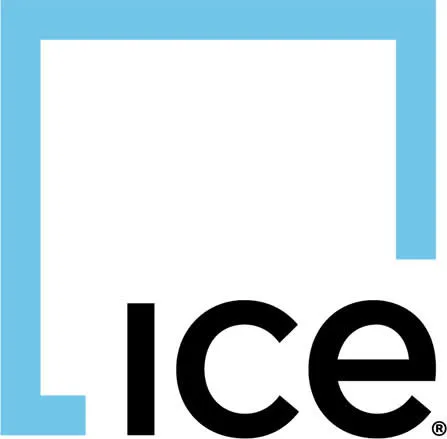
ICE April 2025 First Look: VA Mortgage Foreclosures on the Rise as National Delinquencies Remain Below Pre-Pandemic Levels
Intercontinental Exchange, Inc. (NYSE: ICE), a global leader in financial data and technology infrastructure, has released its “First Look” at U.S. mortgage performance data for April 2025, revealing notable shifts in delinquency and foreclosure activity as key market trends continue to evolve. The monthly snapshot, based on ICE’s extensive loan-level mortgage database that covers the majority of the U.S. residential market, offers early insights into changing borrower behavior, credit health, and prepayment activity.

A key theme in this month’s report is the gradual increase in foreclosure activity, particularly within the Department of Veterans Affairs (VA) mortgage segment. Following the expiration of a long-standing foreclosure moratorium, VA loans are now making measurable progress through the foreclosure pipeline. Although the overall levels of foreclosure activity remain modest by historical standards, April saw a meaningful uptick, suggesting a rebalancing of the market as pandemic-era protections continue to roll off.
Delinquencies: A Modest Increase but Still Historically Low
Nationally, the overall delinquency rate—which includes loans 30 or more days past due but not in foreclosure—rose by a single basis point to 3.22% in April. Compared to the same month last year, this marks a year-over-year increase of 13 basis points, or 4.1%. Despite this upward trend, delinquency rates remain well below pre-pandemic levels, underscoring the resilience of borrowers even amid tighter financial conditions and higher interest rates.
Digging deeper into delinquency segments, serious delinquencies—defined as loans that are 90 or more days past due but not in foreclosure—showed a seasonal improvement on a month-over-month basis. However, the annual comparison paints a different picture. Serious delinquencies rose by 14% compared to April 2024, extending a concerning trend of six consecutive months with double-digit annual increases. This pattern suggests that a subset of distressed borrowers is facing prolonged financial hardship, which may gradually increase the volume of loans transitioning into foreclosure.
As of April 30, 2025, approximately 1.75 million properties were classified as 30 or more days delinquent but not in foreclosure. This represents an increase of 8,000 from March and 94,000 more than the previous year. Meanwhile, the number of properties 90+ days past due stood at 476,000, down 18,000 from March but still 59,000 higher than the prior year.
Foreclosure Activity Edges Higher: VA Loans Lead the Charge
Foreclosure metrics are beginning to show more pronounced movement after several years of extraordinary lows. In April, foreclosure starts increased by nearly 13% year-over-year to reach 29,000, even though they declined by over 12% compared to March 2025. This highlights a broader annual trend of rising foreclosure initiations, driven in part by the resumption of normal servicing and legal processes that were paused or slowed during the pandemic.
Foreclosure sales—completed foreclosures in which properties are sold—climbed to 6,500 in April, marking the highest single-month total in the last 15 months. This volume represents a 6.4% increase over March and a 9.4% rise from April 2024. VA loan foreclosures accounted for a significant share of this activity, reaching their highest monthly sales level since 2019. The surge reflects the clearing of the foreclosure pipeline after the VA moratorium lifted, and may continue in the months ahead as servicers catch up on backlogged cases.
Meanwhile, the number of properties in the foreclosure pre-sale inventory—those actively in the foreclosure process but not yet sold—decreased slightly to 209,000, down 3,000 from March but up by 11,000 year-over-year.
Prepayments Jump Sharply Amid Home Sale and Refinance Activity
April also brought a notable surge in prepayment activity. Measured as the single-month mortality (SMM) rate, prepayments jumped to 0.71%, the highest level since October 2024. This 19% increase over March and a striking 35% increase compared to the same time last year were largely driven by seasonal strength in home sales and a modest uptick in refinancing activity.
Although interest rates remain elevated compared to historical norms, some borrowers are finding opportunities to refinance or pay off their loans early due to improved home equity or the sale of their properties. The prepayment trend may continue to strengthen during the traditional home buying season, particularly if mortgage rates stabilize or decline in the months ahead.
State-Level Insights: Southern States Remain Under Pressure
The ICE First Look report also provides a detailed breakdown of mortgage performance by state, highlighting geographic variations in borrower distress and recovery. Louisiana and Mississippi continue to lead the nation in non-current loan percentages—measuring the combined rate of delinquencies and foreclosures—as both states posted rates above 7%. Alabama (5.53%), Indiana (5.01%), and Arkansas (4.98%) rounded out the top five.
On the opposite end of the spectrum, western states such as Washington (1.94%), Colorado (2.00%), and Idaho (2.02%) posted the lowest non-current rates, reflecting stronger employment dynamics, higher home values, and more robust borrower performance.
States with the highest percentages of loans 90+ days delinquent include Mississippi and Louisiana (both at 1.93%), followed by Alabama, Florida, and Georgia, each with levels above 1.3%. These concentrations of serious delinquency suggest that regional economic or disaster-related factors may be contributing to persistent borrower distress.
Shifting Trends in Year-Over-Year Changes
ICE’s data also highlights how the landscape of delinquency is changing over time. New York, Hawaii, and Maine saw the most significant annual improvements in non-current loan rates, with New York’s rate falling more than 9%. Conversely, Florida saw the sharpest deterioration, with its non-current percentage increasing by more than 12% year-over-year. Other states such as Colorado, Arizona, Georgia, and Michigan also posted significant increases in non-current activity, reflecting localized stress that may warrant further monitoring.
About the ICE First Look
ICE maintains the nation’s leading repository of loan-level residential mortgage data and performance information – which covers the majority of the U.S. market – including tens of millions of loans across the spectrum of credit products and more than 230 million historical records. In addition, the company maintains a robust public property records databases that covers 99.9% of the U.S. population and households from more than 3,100 counties. ICE’s research experts carefully analyze this data to produce the First Look, a monthly summary of month-end delinquency, foreclosure and prepayment statistics.
About Intercontinental Exchange
Intercontinental Exchange, Inc. (NYSE: ICE) is a Fortune 500 company that designs, builds and operates digital networks that connect people to opportunity. We provide financial technology and data services across major asset classes helping our customers access mission-critical workflow tools that increase transparency and efficiency. ICE’s futures, equity, and options exchanges – including the New York Stock Exchange – and clearing houses help people invest, raise capital and manage risk. We offer some of the world’s largest markets to trade and clear energy and environmental products. Our fixed income, data services and execution capabilities provide information, analytics and platforms that help our customers streamline processes and capitalize on opportunities. At ICE Mortgage Technology, we are transforming U.S. housing finance, from initial consumer engagement through loan production, closing, registration and the long-term servicing relationship. Together, ICE transforms, streamlines and automates industries to connect our customers to opportunity.
Trademarks of ICE and/or its affiliates include Intercontinental Exchange, ICE, ICE block design, NYSE and New York Stock Exchange. Information regarding additional trademarks and intellectual property rights of Intercontinental Exchange, Inc. and/or its affiliates is located here. Key Information Documents for certain products covered by the EU Packaged Retail and Insurance-based Investment Products Regulation can be accessed on the relevant exchange website under the heading “Key Information Documents (KIDS).”
Safe Harbor Statement under the Private Securities Litigation Reform Act of 1995 – Statements in this press release regarding ICE’s business that are not historical facts are “forward-looking statements” that involve risks and uncertainties. For a discussion of additional risks and uncertainties, which could cause actual results to differ from those contained in the forward-looking statements, see ICE’s Securities and Exchange Commission (SEC) filings, including, but not limited to, the risk factors ICE’s Annual Report on Form 10-K for the year ended December 31, 2024, as filed with the SEC on February 6, 2025.




